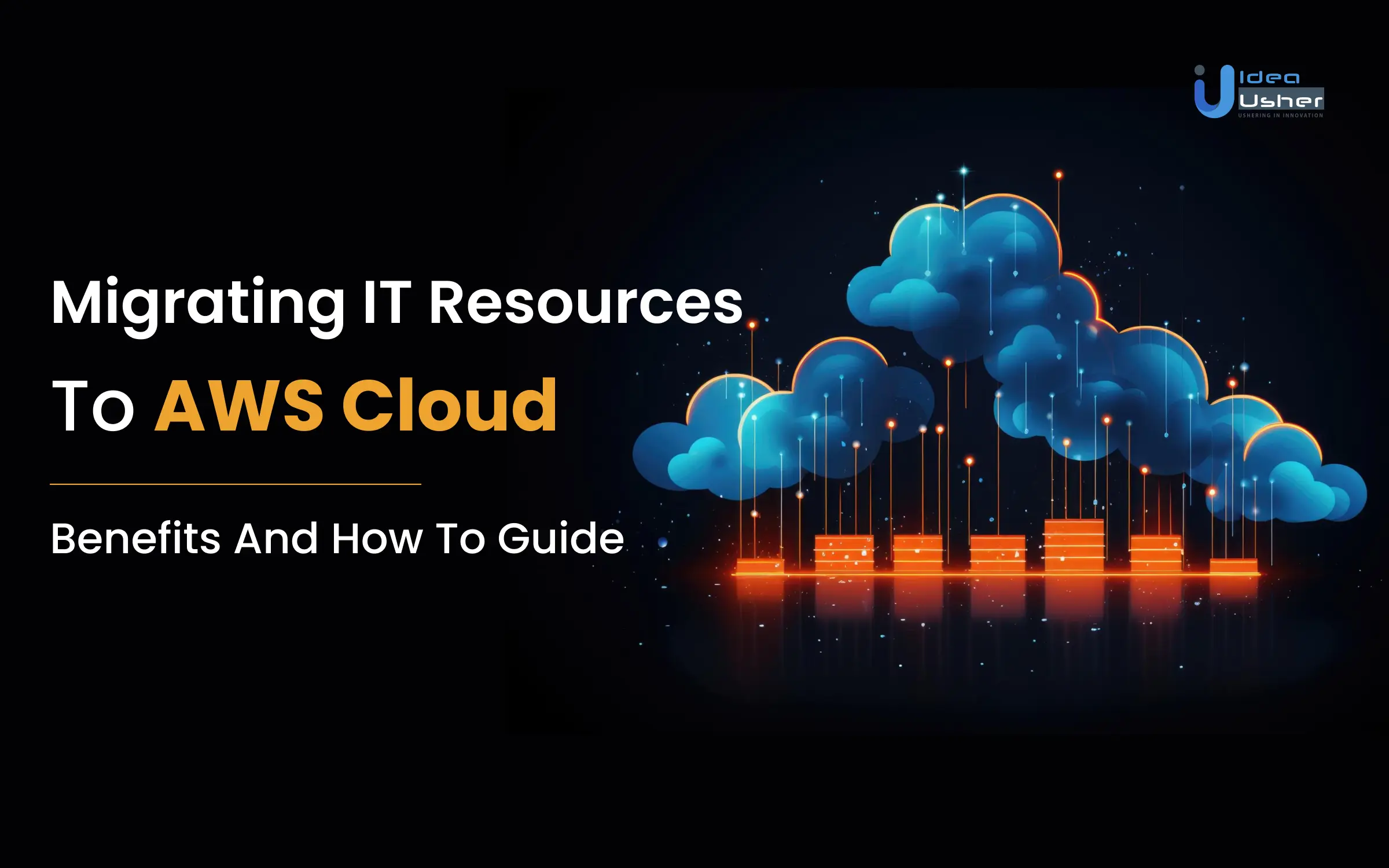Cloud migration to AWS has become a reliable solution for an organization looking to modernize its IT infrastructure and experience many benefits such as scalability, agility, cost efficiency, etc.
Platforms like AWS are getting more traction as more companies realize the benefits of on-demand delivery. Organizations looking to make their business future-proof should consider migrating to more agile cloud platforms like Amazon Web Service.
Businesses can migrate all their workload to the AWS cloud, including websites, storage, applications, databases, and virtual servers. We will understand the benefits of AWS migration and the steps to shift your IT resources to a cloud platform to make your business more scalable, cost-effective, and agile.
What Is Amazon AWS?
Founded in 2002, Amazon.com Web Service is a comprehensive, evolving cloud computing platform developed by Amazon that offers development services such as Infrastructure as a Service and Platform as a Service.
AWS offers various services, such as database storage, compute power, and content delivery services. Amazon was the first to introduce a pay-as-you-go cloud computing model that provides users with storage, computing, and other services.
Enterprises, software developers, and other groups such as education institutions, government agencies, and non-profits utilize cloud computing and storage services from AWS in up to 190 countries.
Benefits Of AWS Migration
Many benefits come with migrating your work+ to AWS, such as security, data accessibility, scalability, etc. However, cloud migration on AWS offers many benefits to businesses, such as
1. Cost Saving
There is the high cost of running a business with an on-premise data center, which can increase drastically as On-premise data centers require hardware infrastructure, power, and lots of space.
With cloud migration, businesses can save money and invest in other areas, such as purchasing new equipment, repairs, space, and more. Also, there are no upfront costs, as AWS charges only for the services you use.
2. Elasticity and Agility
The deployment team can quickly start working on new projects without delays by utilizing AWS, as it provides a serverless infrastructure where the DevOPS team can create new services without requiring underlying infrastructure.
Moreover, users can develop cost-effective applications by leveraging functions stored in a shared repository, resulting in fast code deployments.
3. Security
Many businesses are under threat from malicious people and hackers looking to compromise your network by stealing your business data, which makes security a top priority for any organization.
There are many security approaches that businesses can utilize by migrating their work to the AWS cloud, including.
- Security groups,
- Identity and Access Management
- Data encryption
- Data backup
- Activity logging
There are some other security measures you can also get in AWS, such as Amazon Cloud Watch, Amazon Guard Duty, and Amazon Cloud Trail.
4. Well-Architected Infrastructure
Businesses can perform best practices with AWS’s well-architected framework. The well-architected infrastructure practices are divided into five categories.
- Security
- Operational Excellence
- Reliability
- Costs Optimization
- Performance Efficiency
5. New Technology
From serverless infrastructure to containers, AWS offers many ultra-modern solutions and tools for businesses unavailable in physical data centers. Having access to technologies helps businesses to innovate with more cutting-edge technologies such as blockchain, AI, etc.
6. Data Accessibility
AWS cloud allows team leaders to provide seamless data to their employees located anywhere across the globe. The company has to set up policies regarding accessing and using the computational sources.
The flexibility of offering computational access and availability is not possible on On-premise data centers. Also, by leveraging AWS, the team leader can identify and access management consoles for creating user roles in groups depending on each employee’s responsibility.
7. Scalable Resources
Unlike on-premise data centers, AWS cloud offers a highly scalable infrastructure for businesses.
Organizations can scale almost everything in their infrastructure and adjust resources based on demand or downscale for cost reduction; they will need to pay only for the computational resources they have consumed for their businesses.
Best Examples Of Businesses Migrating To AWS
In this section, we will explore how the company succeeded in its business objectives after migrating its work to the cloud AWS.
1. Sony

Sony began to migrate SAP to Amazon Web Services (AWS) in 2020 to improve cost efficiency, technology modernization, and agility.
With the involvement of 15 SAP applications on AWS, Sony modernized their SAP NetWeaver Business Warehouse Accelerator to SAP S/4HANA on AWS by building new AWS infrastructure for both SAP and non-SAP workloads.
As a result, the company experienced a 30% reduction in data footprints, a 40% improvement in runtime performance, and cost reduction in addition to empowering their global users.
| Founded in | 1946 |
| Founded by | Masaru Ibuka |
| Headquarters | Minato City, Tokyo, Japan |
| Industry | Electronics |
2. Meta

A well-known social networking platform “Meta” was looking to implement scalable solutions with high-security protocols. Meta migrated to AWS to create team visibility and standard threat detection.
Meta used AWS Config across their teams to identify the compliance and workload needs. Also, Meta wants to determine what security controls to use besides implementing the Shared AWS Responsibility Model. After the strategic migration to AWS, Meta experienced many benefits, such as improved development speed, better security and compliance, and a better solution for uniform threat detection.
| Founded in | 2004 |
| Founded by | Mark Zuckerberg |
| Headquarters | Menlo Park, California, United States |
| Industry | Social Media |
3. Samsung

With the mass adoption of digital devices from offices to homes, Samsung has tied up with Amazon’s AWS to handle the increasing complexity of digital devices and efficiently meet the customers’ demands.
Samsung was looking to enhance its forecasting accuracy by using the features of Amazon Sage Maker, which provides fully managed infrastructure, workflows, and tools for training, building, and deploying ML models for any use case.
As a result, the company has experienced many benefits, such as generating fast insights, better forecasting accuracy, saving time for the data science team, enabling them to focus on advanced models, and more collaboration between data scientists and business analysts.
| Founded in | 1938 |
| Founded by | Lee Byung-Chull |
| Headquarters | Suwon-si, South Korea States |
| Industry | Electronics |
4. GoDaddy

One of the largest Domain registrators, GoDaddy, was looking to optimize its operations by adopting cloud-based infrastructure and fulfilling its business goals.
GoDaddy where able to automate its processes and standardize and manage its business architecture by migrating to Amazon Web Service in 2018.
Moreover, in addition to the following benefits, the company has experienced several other advantages as well, such as
- Fast onboarding, where the company has reduced the required days from 270 to 60
- 12% cost savings on workloads
- 40% increase in speed with the required company experimentation in AWS.
| Founded in | 1997 |
| Founded by | Bob Parsons |
| Headquarters | Tempe, Arizona, United States |
| Industry | Domain Registrators |
How To Migrate The Cloud To AWS?
AWS work migration requires careful planning, execution, and testing to ensure a smooth transition. Here is a step-by-step guide on migrating to AWS:
1. Assessment and Planning
Define your migration goals, such as scalability, improved performance, or cost reduction, to guide your decision-making. Moreover, you can document your existing infrastructure, dependencies, applications, and data to get a clear vision of what needs to be migrated.
2. Choose The Migration Approach
There are several migration approaches that you can select based on your business needs, such as
- Replatform: Requires minimal modifications to optimize for AWS.
- Rehost (lift and shift): Move applications as-is to AWS without major code changes
- Repurchase: Replace on-premises software with AWS services or third-party software
- Refactor (rearchitect): Redevelop and redesign applications to be cloud-native
3. Security and Compliance
Consider using AWS Key Management Service (KMS) for implementing encryption for data transition in addition to reviewing best security practices and compliance requirements that are relevant to your industry.
To enhance the security even further, you can set up AWS Identity and Access Management (IAM) for user and resource access control.
4. Network Connectivity
Isolate and configure your network resources by creating an Amazon Virtual Private Cloud (VPC). Also, you can establish a secure network connectivity between your work environment and AWS using AWS Direct Connect or VPN.
5. Data and Application Migration
You can migrate your application to AWS based on your migration approach and business requirements. AWS has the following migration approach for your business requirements; you can plan and execute suitable migration strategies for facilitating a smoother work migration to AWS.
- For rehosting: Use AWS Server Migration Service or third-party tools to migrate VMs.
- For re-platforming: Optimize applications for AWS while considering dependencies.
- For refactoring: Redesign and redevelop applications to leverage AWS services.
Test applications in AWS to ensure functionality and performance.
6. Testing & Optimization
Implement AWS CloudWatch and AWS CloudTrail for monitoring and auditing, which can help you continuously optimize your AWS resources for cost-efficiency and performance.
Also, you can consider using AWS CloudEndure or relevant tools for creating a fail-safe environment for testing. Consider conducting extensive testing, including failover testing, load testing, and security testing, for validating your work migration.
7. Optimization and Continuous Improvement
Explore AWS-managed features and services for enhancing your applications and reducing operational overhead. Also, consider optimizing and monitoring your AWS infrastructure and environment for better cost, security, and performance.
Tools Required To Migrate To AWS
There is an involvement in using tools and technologies to facilitate a smooth transition and migrating your existing cloud infrastructure to Amazon Web Services (AWS).
Here is a typical technology stack and tools you may use for various stages of the migration process:
1. Assessment and Planning
- AWS Migration Hub
- AWS Application Discovery Service
- Terraform or AWS CloudFormation
2. Network Connectivity
- AWS Direct Connect
- Amazon Virtual Private Cloud (VPC)
3. Security and Compliance
- AWS Identity and Access Management (IAM)
- AWS Key Management Service (KMS)
- AWS Config
4. Application Migration
- AWS Server Migration Service (SMS)
- AWS Elastic Beanstalk
- AWS Lambda
- Docker and Amazon ECS/EKS
- AWS App Runner
5. Testing
- AWS CloudEndure
- Load Testing Tools
6. Data Migration
- AWS Database Migration Service (DMS)
- AWS DataSync
- AWS Snowball
7. Monitoring and Optimization
- AWS CloudWatch
- AWS CloudTrail
- AWS Trusted Advisor
8. Deployment
- AWS Elastic Beanstalk
- AWS Lambda and API Gateway
- AWS CodeDeploy
- AWS Elastic Container Service (ECS)
9. Post-Migration Validation
- AWS Application Load Balancer (ALB)
- AWS Config and AWS Config Rules
10. Optimization and Continuous Improvement
- AWS Cost Explorer
- AWS Trusted Advisor
11. Documentation and Knowledge Transfer
- AWS Systems Manager Documents
- AWS Training and Certification
Conclusion
The decision to migrate to Amazon Web Service is a strategic move for organizations aiming to bring modernization to their digital infrastructure. AWS empowers businesses to focus on growth and innovation rather than infrastructure management.
Migrating to AWS enables businesses to scale globally and access cutting-edge technologies such as machine learning, data analysis, artificial intelligence, blockchain, etc.
The strategic way to move your work on cloud services is to work with a reliable development team who can help you with identifying your business needs to deploying your work to Amazon Web Services.
When working with the right partner, you can ensure that you can devote more effort to growing your business, not infrastructure.
At Idea Usher, we can help you migrate and monitor your work to the AWS cloud in a seamless way and can help you detect anomalies and achieve compliance.
Start your organization’s work migration journey to the AWS cloud by contacting us today to understand more about how we can help you make your business grow.
Work with Ex-MAANG developers to build next-gen apps schedule your consultation now
FAQ
Q. What are the benefits of migration to the AWS cloud?
A. There are many benefits of migrating to the AWS cloud, such as cost saving, elasticity, agility, security, well-architected infrastructure, data accessibility, and scalable resources.
Q. What are the types of migration in AWS?
A. Retire, Retain, Rehost, Relocate, Repurchase, Replatform, Refactor, or Re-architect are some types of migration in AWS.
Q. What are the stages of AWS cloud migration?
A. AWS Cloud Migration has the following stages: Prepare, Plan, Migrate, Operate, and Optimize.
Q. What are the common migration strategies to AWS?
A. Rehosting (lift and shift), re-platforming, refactoring (rearchitecting), repurchasing, and reimagining are some common migration strategies to AWS.
Q. What tools are available for migrating databases to AWS?
A. Various tools are available for migrating databases to AWS, such as MySQL, PostgreSQL, Oracle, and SQL Server.





















